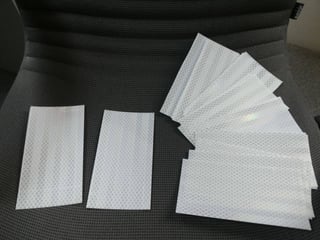We have some short and tall traffic cones. Some of them are out of maintenance, and need to be repaired & cleaned. The two big questions are:
How can I clean the traffic cones?
How can I repair the traffic cone's white bands?
They look like this:
As you can see, there are three types of traffic cones, from left to right as defined 1, 2, and 3. Number 1 is dirty; number 2 is both dirty and damaged; number 3 on the right is short and repaired temporarily.
You can see the dirty cones contain oil, dust, etc. and need to be cleaned. Which product should I use without harming the plastic surface and it's colour?
To be clear, I bought a thin reflective band in order to surround the cone, but according to the geometric rules, if I use a rectangle sided band on a cone, I will face some material gaps that I don't want. Also, the problem is that bands are very expensive here in Turkey.






